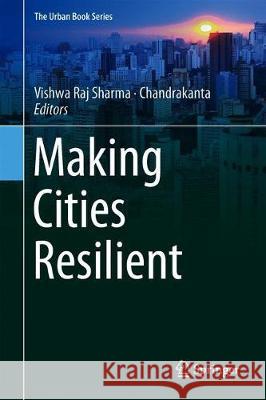Making Cities Resilient » książka
Making Cities Resilient
ISBN-13: 9783319949314 / Angielski / Twarda / 2019 / 345 str.
Since the 1972 Habitat I (1996), Habitat II (1996) and Habitat III (2016), the world has faced many serious challenges, including rising inequality, increasing insecurity in many places and the widening impacts of climate change everywhere. But we have also seen made major advances in medicine, life expectancy, information and communications technology, governance and human knowledge. On both the positive and negative sides of this ledger, cities have been a primary arena where change takes place. As the world has transformed, so have the cities. Today, cities are home to 54 per cent of the world's population, and by the middle of this century that figure will rise to 66 per cent. While cities face major problems, from poverty to pollution, they are also powerhouses of economic growth and catalysts for inclusion and innovation. With vision, planning and financing, cities can help provide solutions for the world. With this spirit, Shaheed Bhagat Singh College (University of Delhi- New Delhi, India) organized a two day National Conference on Making Cities Resilient: Post Habitat III, in Delhi, during 3rd & 4th February 2017. University Grants Commission (UGC) and Indian Council of Social Science Research (ICSSR) financed this conference. Professor R. B. Singh, Vice President International Geographical Union (IGU), welcomed the idea of publication of selected papers for this volume. Mega cities in India suffer problems of lack of basic amenities like housing, water, electricity, sewerage, etc. Out of the total estimated slum population of 505.5 million people in Asia, India hosts a large share of it. The United Nations Program "Making Cities Resilient" is focused on mitigating the disaster risk in urban areas. The Government of India programs for making cities more resilient include Digital India, Make in India, 100 Smart Cities Development together with corporate social responsibility are synchronized with globalization of Indian mega cities. But, in recent years the disaster and health risk reduction in Indian mega cities are challenging tasks for urban governance. This book gives an insight into the various issues related to the urban environment and micro climate change, urban housing, slums and infrastructure, marginalized urban spaces, disaster risk in mega cities, urban health and wellbeing etc. This volume contains 22 selected papers. Most of these papers provide a very detailed analysis of various cities of India. These research papers include the innovative geospatial techniques like urban zonation, urban heat island mapping and vulnerability analysis in a multi-hazard framework in utilizing Geographic Information System (GIS) for mitigating risks and achieving urban sustainability.











